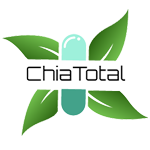FATS & FOOD: everything is a matter of measure
Currently, about 42% of the energy in our diet comes from fats. The report of the Committee on Medical Aspects of Food Policy (COMA) suggests reducing that figure to 35%. And the National Committee on Nutrition Education (NACNE) recommended a reduction to no more than 30%, refers especially to
saturated fats . Where they are and how they work in our body are some of the issues that need to be addressed. Fats provide a concentrated source of energy in the diet. The constituents of fats are fatty acids. Its classification depends on the type of chemical bond present in the fatty acid. If a fatty acid has all the hydrogen atoms it can withstand , it is called saturated . In contrast, if some of the hydrogen atoms are absent and the simple bonding between the carbon atoms has been replaced by a double bond, it is unsaturated. Unsaturated fats are liquid at room temperature. Usually, they are of vegetable origin. Lard, bacon and meat fat, for example, are saturated fats.
Function of fats
Fats have important functions in the body: they are a good source of concentrated energy and also act as vehicles for the fat-soluble vitamins A, D, E and K. Fats are also essential for the structure of cell membranes and Are precursors of many hormones.
Cholesterol “good” vs. Cholesterol “bad”
Cholesterol is present in all animal tissues but is absent in plants. It is essential as a component of cell membranes and as a precursor of bile acids and certain hormones, but, unlike what happens with Omega 3 fatty acids, the
body can produce its own cholesterol, so there is no need to
incorporate it through Of the diet.
Cholesterol can cause arterial plaques if levels are too high. This can result in atherosclerosis and heart disease. LDL (bad cholesterol) causes heart problems. HDL (good) cholesterol, on the other hand, helps protect against
the risk of heart disease.
What are trans
Fatty acids? Unsaturated fatty acids can exist in two different geometric forms . These forms are called “cis” and “trans”. The unsaturated fatty acids exist naturally in the “cis”. During the manufacturing process these fatty acids can be changed to the “trans” type. The hydrogenation of margarine, for
example, causes this phenomenon . It has been suggested that “trans” fatty acids can increase the risk of heart disease.
Free
Radicals Free radicals are very reactive molecules that have been linked to heart disease and cancer. A number of factors, including alcohol consumption, stress and environmental contamination can precipitate the generation of
free radicals in the body. Polyunsaturated acids can also produce free radicals. Antioxidants such as vitamins A, C and E, present in fresh fruits and vegetables , offer protection against free radicals.
The importance of Omega 3
Two fatty acids are essential: linoleic acid and linolenic acid . The Omega 3 includes the first of these. They must be present in the diet because the body can not produce them and are necessary to achieve a good health and a balanced diet.
They are present in the following fish: herring, salmon, lake trout , dogfish and mackerel. In addition, sunflower , soybean, flax and chia seed oils , the millenarian plant with the highest percentage of Omega 3 , can be reduced . Adequate intakes of these foods can reduce the risk of cardiac arrest and other diseases. Coronary heart disease.
Omega 3 is beneficial to treat:
– Cardiovascular diseases
– Hypertension
– Rheumatoid arthritis
– Multiple sclerosis
– Cancer
– Atopic
dermatitis
– Psoriasis – Ulcerative colitis
– Inflammatory diseases
– Autoimmune diseases
– Lung cancer
You can get a decrease in the consumption of Saturated fats by elevating consumption of Omega 3. There are no studies that demonstrate that the high consumption of Omega 3 fatty acids produce side effects. Currently, there are dietary supplements in the form of capsules based on chia oil, the natural source with the highest percentage of Omega 3. These provide the recommended daily dose of Omega 3.
Dr. Fernando Estévez Castillo
